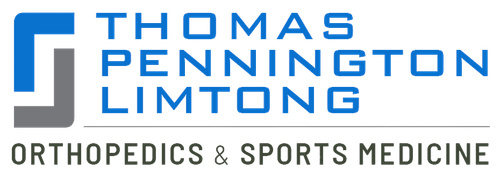A posterior shoulder dislocation takes place when the head of the long bone in the upper arm, known as the humerus, moves backward out of the socket. The humerus bone is most likely felt at the back of the joint. It is quite a rare shoulder injury because the majority of shoulder dislocations are anterior. 
Remarkable, sagacious, and board certified orthopedic surgeons at the Thomas & Bigler Knee & Shoulder Institute provide treatments for posterior shoulder dislocation to patients in Las Vegas, Nevada, and surrounding towns and neighborhoods in this part of the US.
Symptoms
The symptoms of a dislocated shoulder posterior include excruciating pain in the joint of the shoulder at the time of injury, followed by rapid swelling. The condition leads to a total loss of shoulder function and the patient is not only in constant pain but is also unable to use the arm. The afflicted shoulder also has a deformed appearance and the patient usually wants to hold out the arm to the side and rotate it inward.
Causes
Shoulder posterior dislocations usually happen due to two reasons, either because of a direct hit to the humeral head’s front, or by falling onto an outstretched arm. Both the causes leading to shoulder posterior dislocations can occur due to sports activities, particularly contact sports. These may also occur due to trauma caused by vehicle accidents and epileptic seizures where the patient violently thrashes their arm.
Treatment
A patient should seek medical attention immediately for posterior shoulder dislocation. They should not move their shoulder or try to put it back into position on their own. An orthopedic surgeon will check the hand, wrist, sensations and pulses in the arm to determine if there is any blood vessel or nerve damage.
For minor dislocations and conditions where there are no associated fractures, a surgeon can actually pop back the dislocated bone back into place. In any case the patient will be administered an anesthetic, sedatives, or relaxants before such a step is carried out.
The surgeon will then prescribe adequate rest to give time to the soft tissues in the shoulder to heal. Subsequently, the patient will be put on a rehabilitation program to regain strength and full movement.
Severe cases that involve fractures, damage to nerves or blood vessels, or extensive soft tissue injury may require surgery to treat the humeral head and repair the injured structures. Surgery will have to be followed by a period of complete rest and a comprehensive rehabilitation program.
Surgery
A surgeon may operate when the patient has recurrent dislocation or subluxation. In such cases, an individual’s torn cartilage and ligaments are reattached to the bone with stitches or sutures.
If the subluxation or dislocation is secondary to the stretched ligaments, then first the surgeon will tighten the ligament with a process called capsular shift or capsulorraphy, and then secure it with sutures or stitches.
If a patient has stretched ligaments, which are also torn away from the bone, then both the procedures can be carried out. Golden and board certified orthopedic surgeons Dr. Steven Thomas and Dr. Gregory Bigler receive patients from Las Vegas, Nevada, and nearby areas in The Battle Born State for the treatment of posterior shoulder dislocation.
If you would like to schedule an appointment or learn more about the Knee and Shoulder Institute procedures & treatments performed by Las Vegas, Nevada board certified surgeons Steven C. Thomas, MD and Gregory T. Bigler, MD. call (702) 933-9393; Physical Therapy (702) 933-9393.
